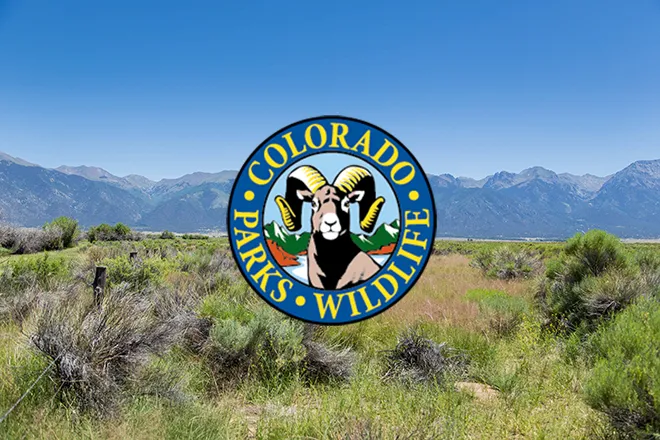
Colorado Parks and Wildlife sees increase in wolf sightings
With warmer weather and decreasing restrictions, more people are recreating in the outdoors, and Colorado Parks and Wildlife is seeing an increase in the number of sightings of potential wolves in the state.
“Public reporting vastly increases our ability to know what’s happening across the state,” says Dan Prenzlow, Director of Colorado Parks and Wildlife. “While not all reports end up being verified as wolves, we make every effort to investigate credible sightings through on-the-ground investigations, biological sampling, and deploying a variety of survey techniques.”
There are several known and some additional credible reports of potential wolves in the state at this time.
Wolf “1084M” North Park Update
The lone wolf that was first confirmed in North Park one year ago continues to persist in that area. The male wolf, designated by Wyoming Game and Fish as 1084-M, was collared in the Wyoming Snake River pack and dispersed into Colorado where he was first photographed in July 2019. CPW pilots regularly fly the area and assist in keeping track of 1084’s movements. On the ground, wildlife managers conduct ground surveillance and communicate regularly with private landowners in Jackson County.
New report in Laramie River Valley
Wildlife managers are attempting to confirm a credible wolf sighting in the Laramie River Valley in Larimer County. An animal sighted in the area was wearing a wildlife tracking collar, which indicates it is likely a dispersal wolf from monitored packs in Montana or Wyoming, however flights and ground crews have been unable to detect a signal or visually confirm the wolf. It has been determined that the animal in Larimer County is not wolf 1084-M from neighboring Jackson County. If a wolf or wolves are confirmed in Larimer County, they would be the furthest east in Colorado in nearly a century.
New report in Grand County
Two groups of campers in Grand County over the weekend of June 6-7 were surprised to see a large wolf-like animal in the area in very close proximity to their camps. The incidents were reported to CPW. Wildlife officers and biologists responded to the area to gather biological evidence that could be used to confirm the presence of a wolf versus a coyote, lost or escaped domestic dog or domestic wolf-hybrid. Additional searches and monitoring of the area are continuing. Contacts with local animal control officials confirm no missing hybrids in the area. Biological samples were limited. The animal approaching humans so blatantly is atypical wolf behavior so additional work will be needed to fully confirm the animal’s identity. More information will be provided when available.
NW Pack Update
In the very northwest corner of Colorado, Colorado Parks and Wildlife staff continue to monitor the state’s first known pack of wolves since the 1930s. As many as six wolves have been confirmed in several previous sightings by staff, hunters, and landowners. The pack, originally reported to CPW late last year, has been relatively quiet of late.
Wildlife managers were able to recently capture an image of a lone wolf feeding on an elk carcass in the area. Only one wolf was seen over several different nights, so it is unknown if the wolf is a member of the known pack or the animal is a new lone disperser into the area.
Disease tracking
CPW biologists and veterinarians have analyzed scat (feces) samples and determined that several members of the pack in northwest Colorado are positive for eggs of the tapeworm Echinococcus canadensis. This parasite can lead to hydatid disease in wild and domestic ungulates. These tapeworms have been found in wolves in Wyoming, Montana, and Idaho. Hydatid disease has not been widely seen in Colorado, but testing has been limited. CPW is increasing monitoring for hydatid disease including collecting and analyzing coyote scat to establish baseline data.
While Colorado Parks and Wildlife is working to monitor wolves, follow up on wolf sighting reports, and track disease, it is important to note that wolves in Colorado remain under the jurisdiction of the U.S. Fish and Wildlife Service. Wolves are a federally endangered species in Colorado and until that designation changes, all wolf management is under direction of the federal government. Killing a wolf in Colorado is a federal crime and can be punishable with up to a year in prison and a $100,000 fine.
Colorado Parks and wildlife has assembled a Frequently Asked Questions document addressing many issues people are curious about. This can be accessed at:
Campers, landowners, and outdoor recreationists that see or hear wolves in Colorado are encouraged to complete the computer-based wolf sighting form which is available online at https://cpw.state.co.us/learn/Pages/Wolf-Sighting-Form.aspx. If unable to use the online form, sightings can be reported to the nearest CPW office.

















